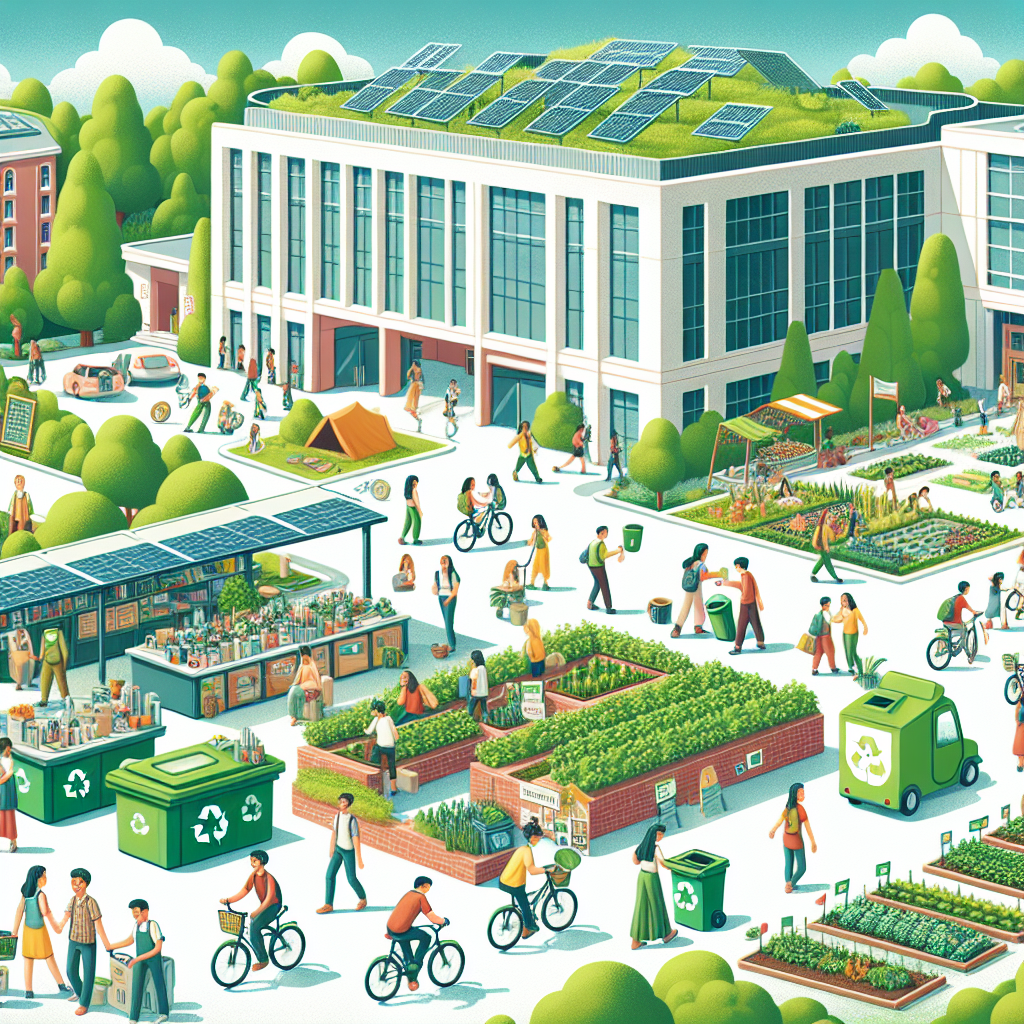Embracing Sustainable Living on Campus
The concept of sustainable living is not just a buzzword; it’s a necessary shift in how we approach our everyday lives, especially as concerns about climate change and environmental degradation continue to grow. For students, the campus becomes a microcosm for experimenting with and adopting sustainable lifestyles that could shape future trends in our society.
In this article, we’ll delve into the importance of embracing sustainable living on campus and how it can contribute to future student lifestyle trends, ultimately influencing the future of living for all.
The Imperative of Sustainable Living
Sustainable living is about making conscious choices to minimize our environmental impact and preserve resources for future generations. It involves considering the long-term effects of our actions on the planet and opting for practices that promote ecological balance.
On college campuses, where young minds are nurtured, sustainable living becomes an educational experience in itself. It’s an opportunity for students to practice responsibility towards the environment and learn how their daily choices can contribute to a healthier planet.
Why Campuses are Crucial for Future Living Trends
Incubators for Change
College campuses serve as ideal testing grounds for new ideas and innovations. They are places where future leaders are shaped, making them powerful platforms for promoting sustainable habits that students may carry with them into their future homes and communities.
Setting Examples for Society
When a campus commits to sustainability, it sets a positive example for the surrounding community. Successful initiatives can inspire other institutions and neighborhoods to adopt similar practices, amplifying the impact of sustainable living.
How Students Can Promote Sustainable Living on Campus
Reduce, Reuse, Recycle
The age-old mantra still holds true. Students can make a significant difference by reducing waste, reusing items, and recycling materials. Campus recycling programs, thrift stores, and zero-waste events are practical ways to implement these principles.
Energy and Water Conservation
Conserving energy and water are key aspects of sustainable living. Simple acts like turning off lights when not in use, taking shorter showers, and reporting leaks can have a substantial cumulative effect.
Sustainable Transportation
Opting for walking, cycling, carpooling, or using public transportation instead of driving alone can significantly reduce one’s carbon footprint. Many campuses now offer bike-sharing programs and shuttle services to encourage sustainable transportation.
Mindful Food Choices
Choosing plant-based meals, supporting local produce, and reducing food waste are ways students can promote sustainability through their dietary choices. Campus dining services can also play a role by sourcing food responsibly and offering more sustainable options.
The Role of Technology in Future Student Lifestyle Trends
Smart Campuses
Technology plays a crucial role in making campuses more sustainable. Smart systems that control lighting, heating, and cooling can optimize energy use. Apps that monitor water usage or provide real-time public transportation schedules empower students to make more sustainable choices.
Renewable Energy Projects
Solar panels, wind turbines, and other renewable energy projects on campus not only supply clean energy but also serve as educational tools for students studying environmental science and related fields.
Waste Management Innovations
Advances in waste management, such as composting programs and the use of biodegradable materials, are becoming more prevalent on campuses. These innovations not only manage waste more effectively but also educate students on the importance of responsible waste disposal.
Integrating Sustainability into Campus Culture
Green Clubs and Organizations
Campus clubs dedicated to environmental causes can lead initiatives, host events, and create campaigns that promote sustainability. These groups provide a platform for students to take action and engage with like-minded peers.
Sustainability in Curriculum
Incorporating sustainability into the curriculum ensures that all students, regardless of their major, learn about the importance of environmental stewardship. Classes on sustainable development, environmental ethics, and green technology can inspire students to integrate sustainability into their future careers.
Campus Policies and Initiatives
Universities can implement policies that reflect a commitment to sustainability, such as requiring LEED certification for new buildings or setting campus-wide goals for reducing carbon emissions. These policies help embed sustainability into the campus infrastructure and operations.
Overcoming Challenges to Sustainable Living on Campus
Sustainable living on campus is not without its challenges. Budget constraints, lack of awareness, and resistance to change can all impede progress. However, through education, community engagement, and leadership commitment, these obstacles can be overcome.
Securing Funding
Grants, partnerships, and fundraising campaigns can provide the necessary financial support for sustainability projects. Engaging alumni and local businesses can also help secure funding.
Building Awareness
Educational campaigns and events can raise awareness about the importance of sustainability and how each individual can contribute. Student ambassadors can play a key role in spreading the message.
Embracing Change
Change can be difficult, but it’s essential for progress. By highlighting the benefits of sustainable living, such as cost savings and improved health, campuses can encourage students and staff to embrace new practices.
The Future of Sustainable Living Beyond Campus
Sustainable Living Communities
The sustainable habits fostered on campus can lead to the development of sustainable living communities off-campus. These communities prioritize green building, renewable energy, and a shared commitment to environmental responsibility.
Alumni Influence
As students graduate and move on to their professional lives, they carry with them the lessons learned about sustainable living. They can influence their workplaces and industries to adopt more sustainable practices.
Global Impact
The collective actions of students and campuses worldwide contribute to a larger movement towards sustainability. As more individuals and institutions commit to sustainable living, the potential for positive global change increases.
Conclusion
Embracing sustainable living on campus is not just about the here and now; it’s about paving the way for future trends in how we live, work, and interact with our environment. By adopting sustainable practices, supporting technological innovations, and integrating sustainability into campus culture, students can make a lasting impact that extends far beyond their college years.
Sustainable living is a journey, and college campuses are at the forefront of this exciting and necessary evolution. By working together, we can create a future that is not only sustainable but also vibrant and thriving for generations to come.










